Castles in Sweden! Once upon a time, rich and powerful Swedes constructed buildings that would serve as both housing and protection. Many of these castles still exist, and in other cases you can visit imaginative castle ruins. Which of these castles and castle ruins have you visited?
Innehållsförteckning
Castles in Sweden
Castles in Sweden are what we're talking about today! Castles, palaces, fortresses and forts... There are plenty of them in our country, but what is the difference and what is what?
It is clear that the definitions are intertwined and that it is difficult to distinguish one from the other. For example, the same building may have served as a fortress in one period, a castle in another ... and a palace in a third. Moreover, what might be considered a castle is sometimes called a fortress and vice versa.
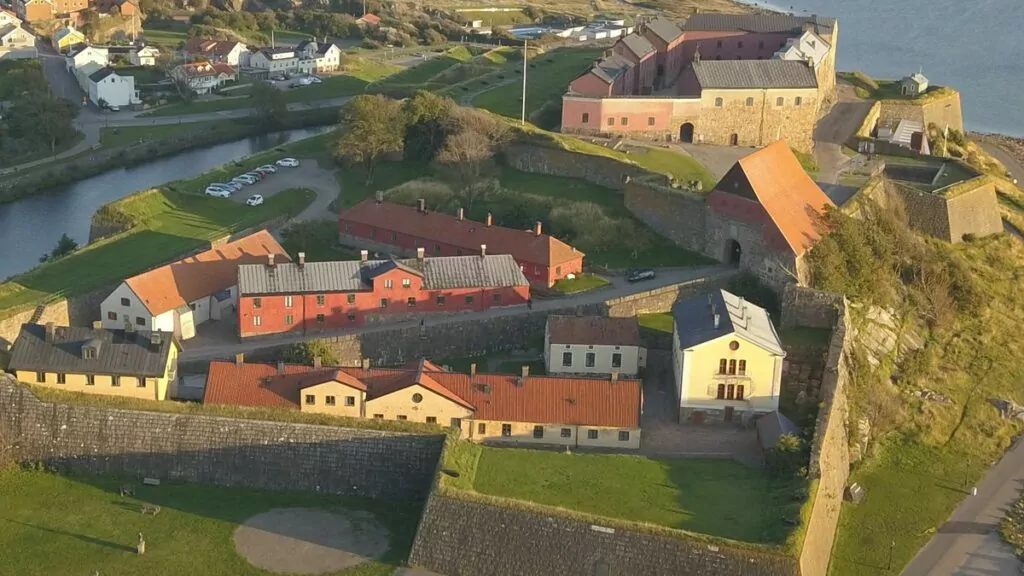
It's not easy to decide what to call a castle, palace or fortress. If you miss a castle or castle ruin in the list, we may have written about it in our reports on castles and castle ruins. You can also check out our list of ancient castles!
Castle, palace or fortress?
- Borg is an older fortified building, often medieval, which has also been used as a residence.
- Castle is a building for royalty, built when the castle was no longer needed for defence.
- Fortress is a permanent facility that supports the defence, but is not primarily a residence.
- Forniture is a fortified structure from prehistoric or early medieval times.
1. Näs Castle on Visingsö
Näs Castle was built in the 12th century and was one of Sweden's first royal castles. The castle had a strategic location at the southernmost point of the Visingsö and there are stories about the treasury that was placed here.
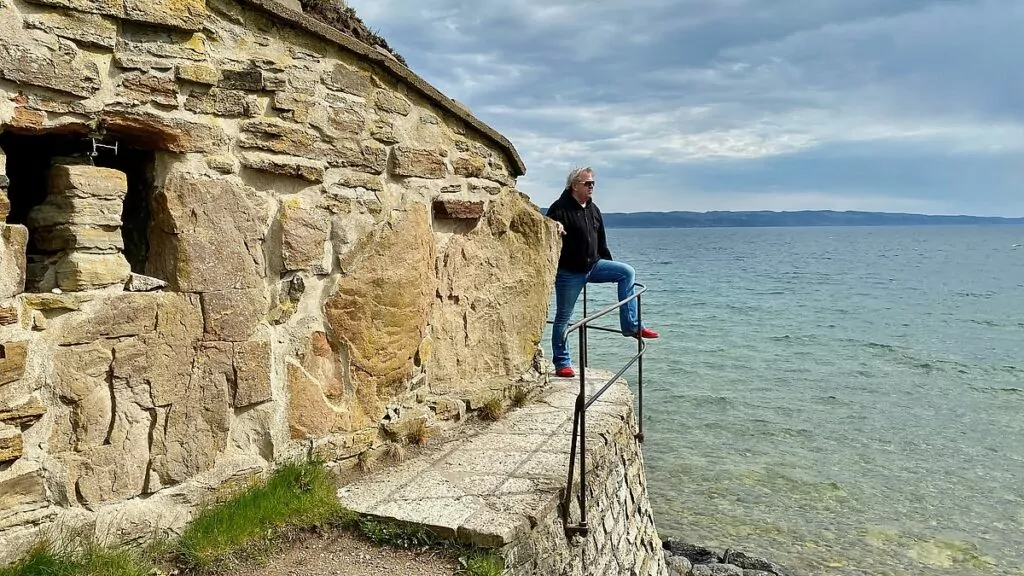
In 1318, the castle was burnt down during a battle for royal power. The history is interesting, but if you go here, be aware that only a relatively small part of the castle remains.
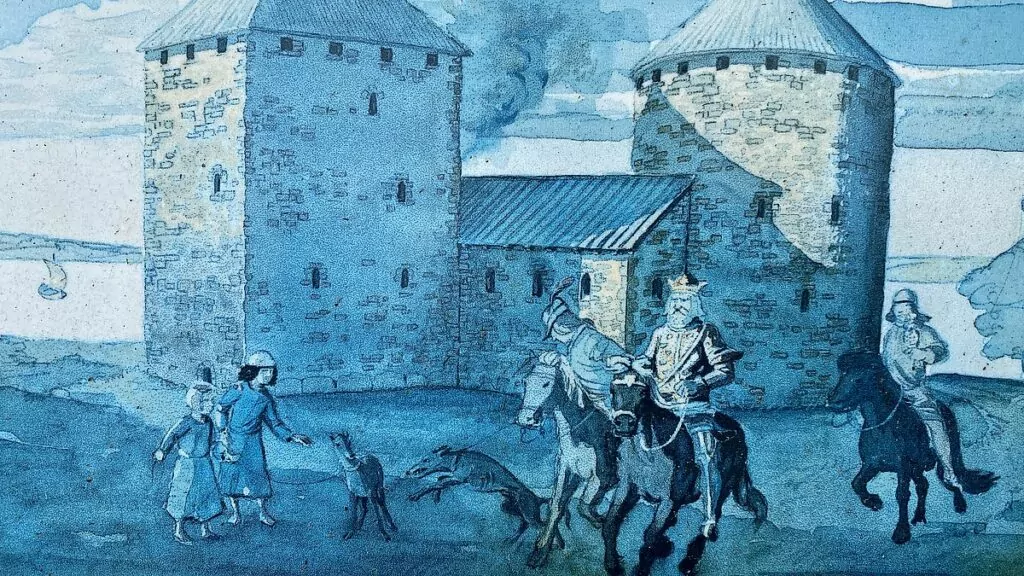
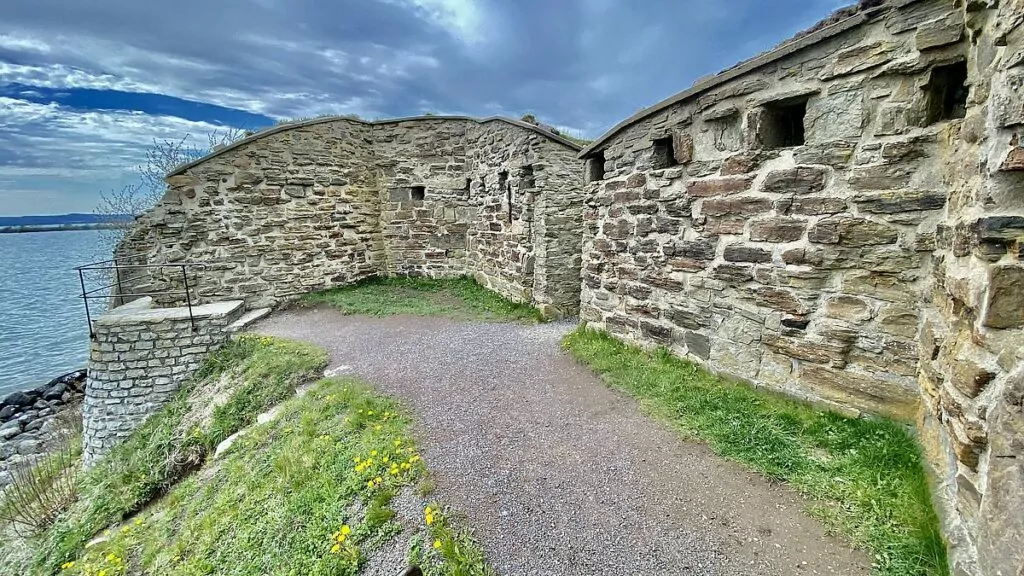
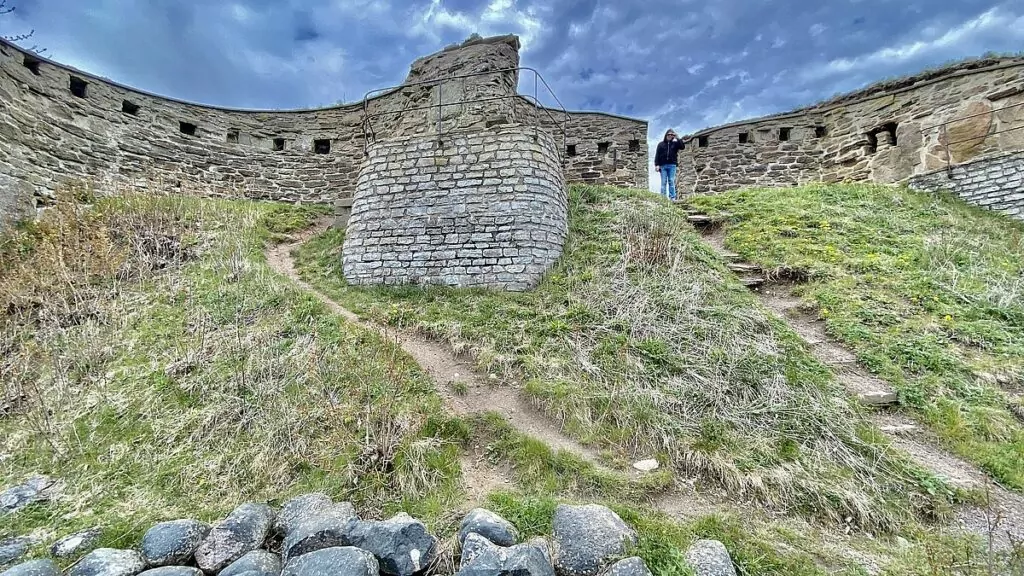
Find here: Näs castle ruins are located at the southernmost point of the island of Visingsö, in Lake Vättern.
2. Rumlaborg in Huskvarna
At the mouth of the Huskvarnaån river in Vättern, in the Huskvarna, you can see the ruins of the fortress and castle of Rumlaborg. The fortress was built in the 1360s by Albrecht of Mecklenburg, who was elected King of Sweden in 1364. The fortress replaced Jönköping Castle, which had been burned by Duke Erik in 1309.
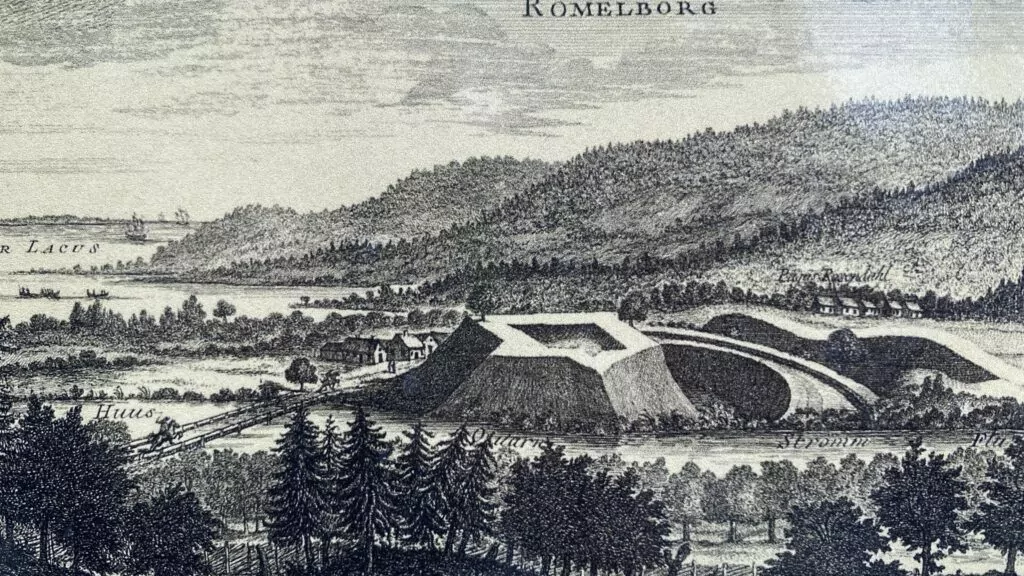
Rumlaborg became a centre of power. In the 15th century, the power of the castle bailiffs increased, which eventually led to the Engelbrekt rebellion in 1434, when many castles were captured and burned, including Rumlaborg.
The ruin today consists of a castle hill surrounded by three ramparts and moats. On the hill stands a gazebo built in 1845. Finds from archaeological surveys in Rumlaborg during the 1930s are in the Huskvarna City Museum.
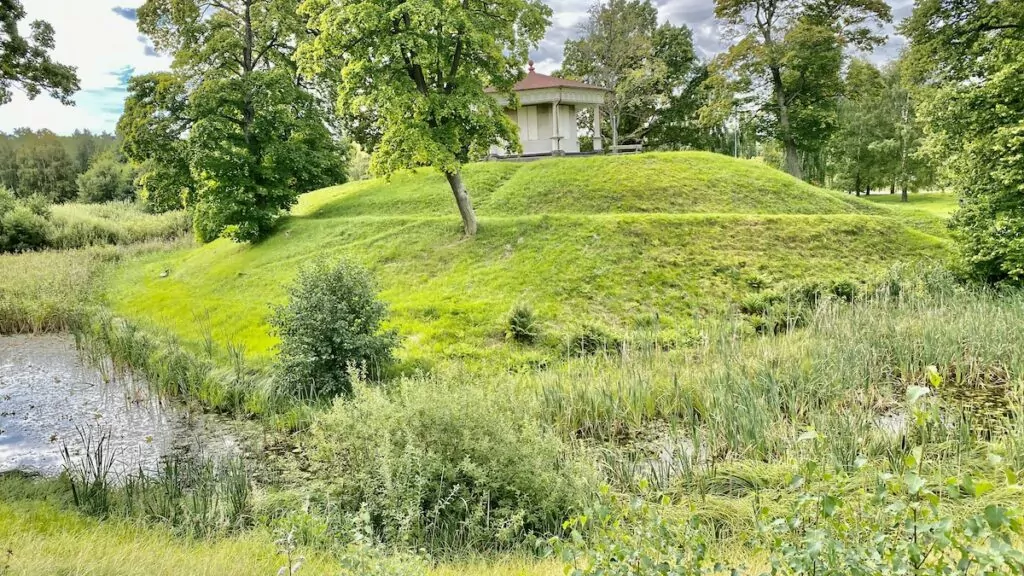
Find here: Rumlaborg is located along the E4 motorway in Jönköping. Turn off the motorway in Huskvarna at Huskvarnaån.
3. Varberg Fortress
Varberg Fortress is a powerful defence structure with a long history, and the cliff where the fortress is located has been used for guarding since prehistoric times. When the Danish King Erik Klipping was murdered in 1286, the Count of Northern Halland, Jacob Nielsen, was accused of the murder. To defend himself, he had a castle built on the cliff in Varberg.
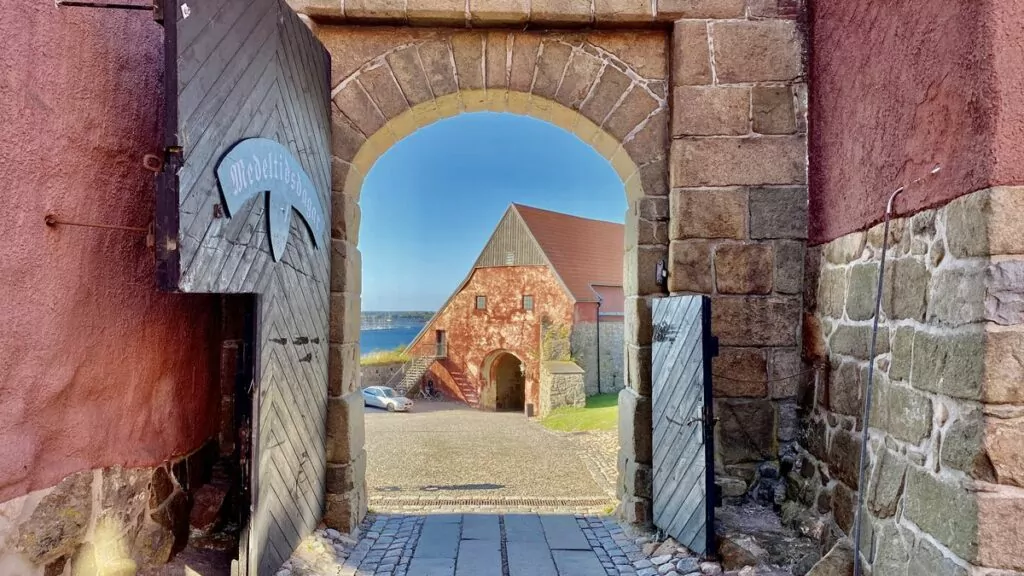
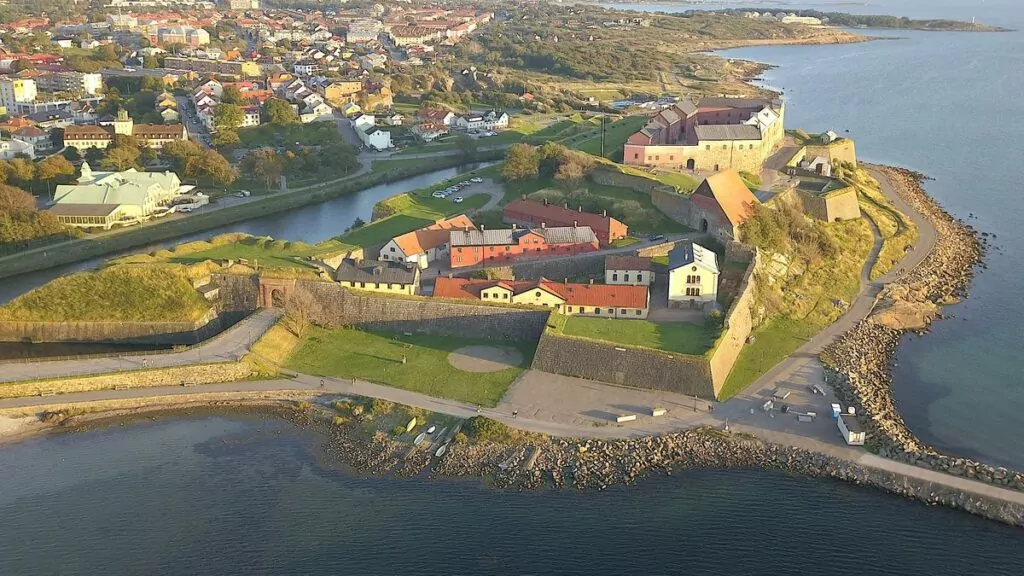
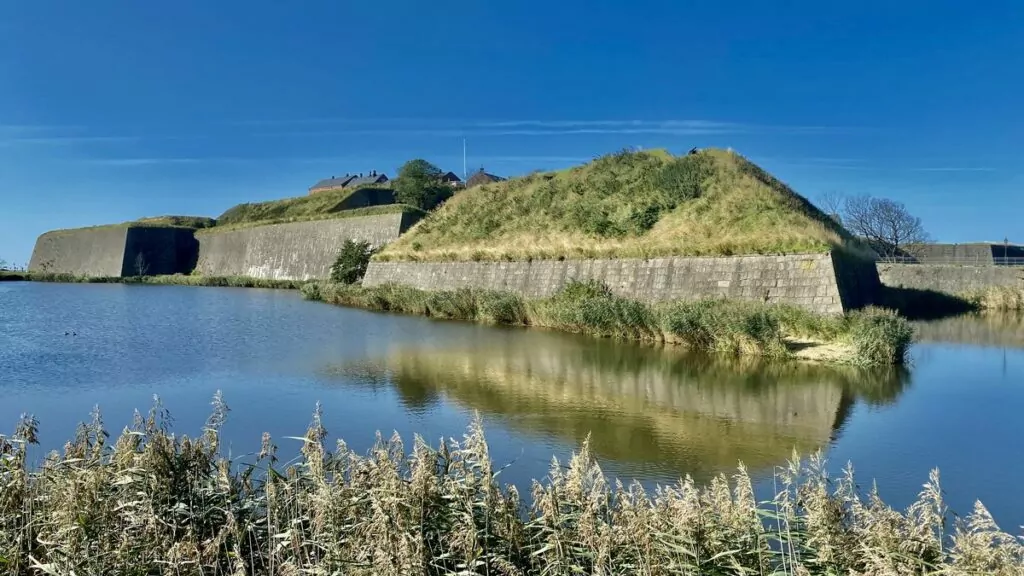
During the Nordic Seven Years' War, the castle was first captured by the Swedes in 1565, only to be retaken by the Danes shortly afterwards. King Christian IV built an effective defence system with stone-clad earthworks and bastions, and Varberg Fortress became one of the most modern in Europe. However, the fortress never had to be tested in war and after the peace of Brömsebro in 1645 it fell to Sweden.
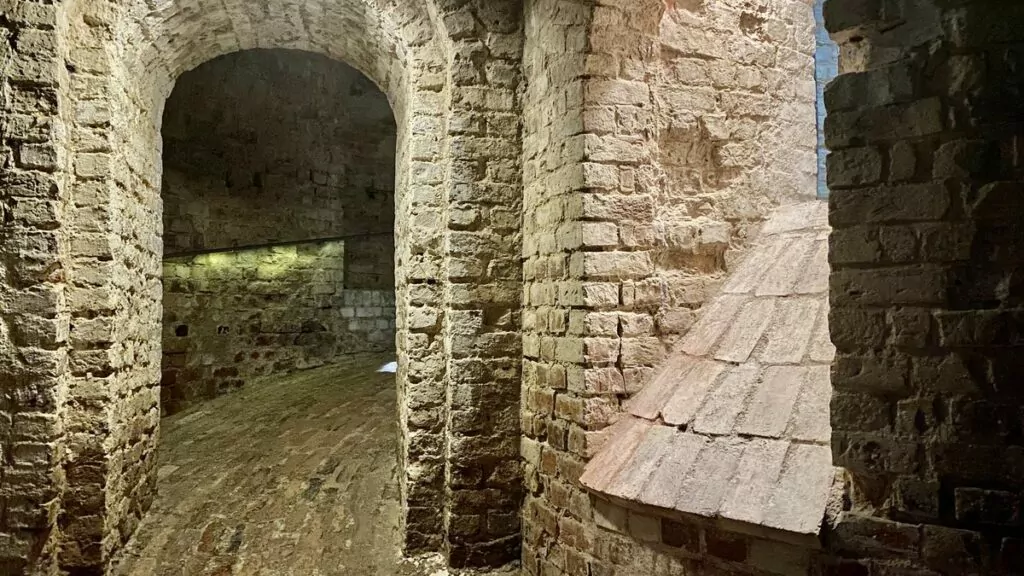
Find here: Varberg Fortress is located on the west coast, in the centre of Varberg, in the province of Halland.
4. Hunehals Castle in Kungsbacka
Hunehals Borg was a medieval castle located outside Kungsbacka in the 13th and 14th centuries. The castle was built by the Danish Count Jakob Nielsen and once played an important political role, but from the 1330s the castle fell into oblivion.
Not much remains of the building today, but a cultural trail has been organised with information signs telling the story of the castle. Guided walks are also organised during the summer.
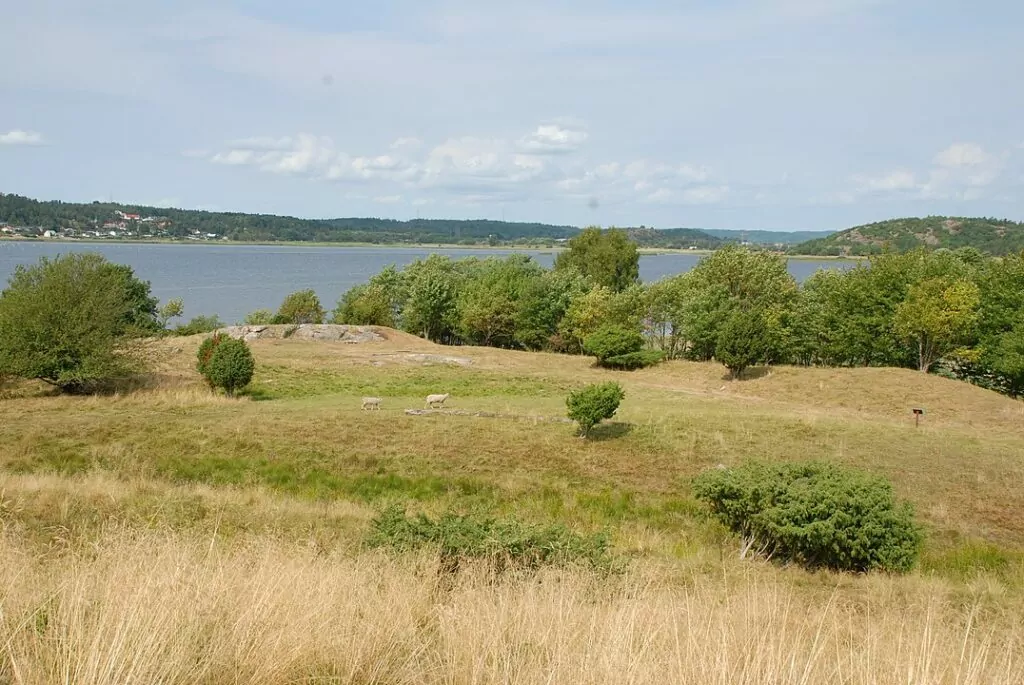
Find here: Hunehals Castle is located at ' Hanhals Holme in Kungsbacka.
5. Sölvesborg castle ruins in Blekinge
Sölvesborg Castle ruins are the ruins of a castle that was built in the 13th century and was one of the most important medieval fortifications in eastern Denmark. The area was lost to Sweden in 1332, but came back under Danish rule in 1360.
In 1452, Karl Knutsson burned down the castle, and by 1564 its military importance was largely over. The castle eventually became a quarry and by 1750 it was all in ruins. Finds are exhibited at Sölvesborg Museum.
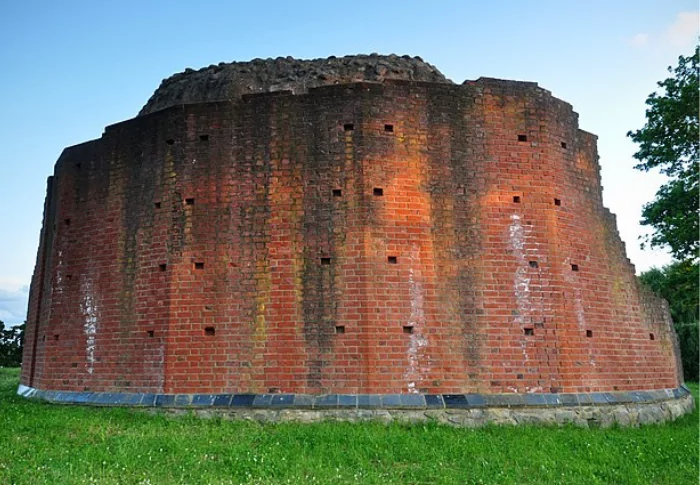
Find here: Sölvesborg Castle is located right next to Sölvesborg Castle, in Sölvesborg.
6. Lillö castle ruins in Kristianstad.
Lillö castle ruins are located on the island of Lillön in the Helge River in the Kristianstad. During the Middle Ages, the castle Lillöhus was located here. The castle was first mentioned in 1343, when Åke Axelsson Tott was the owner.
The Swedes tried to take the castle in 1612, but only succeeded in 1658, after which the castle was destroyed. Today Lillön consists of a ruined hill surrounded by deep moats, where the excavated remains of the castle can be seen under cover.
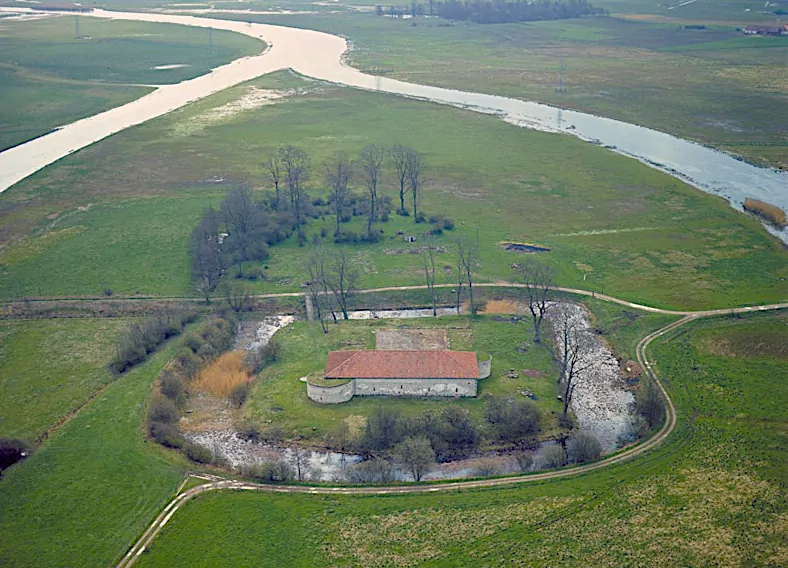
Find here: Lillöborgen is located in Kristianstad in north-eastern Skåne.
7. the centre of Helsingborg
The tower in Helsingborg, known as the Core, is all that remains of the great castle that the Danes began building in 1320. One of Denmark's most important strongholds, the castle was equipped with a 500-metre-long wall, 14 smaller defence towers and a drawbridge.
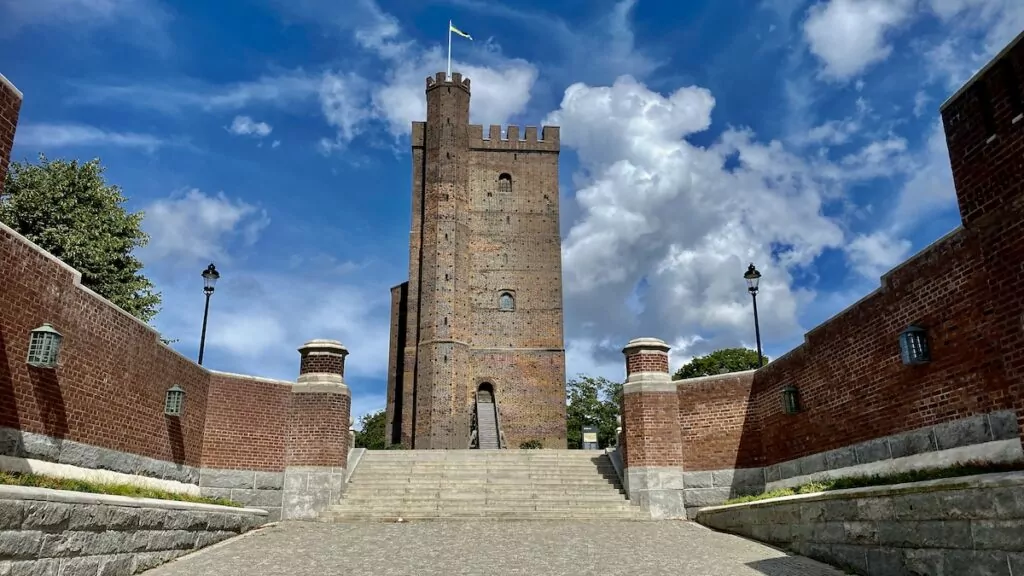
At the Peace of Roskilde in 1658, Helsingborg and Skåne became Swedish. The Swedish King Charles XI ordered the castle to be demolished, but the tower was retained.
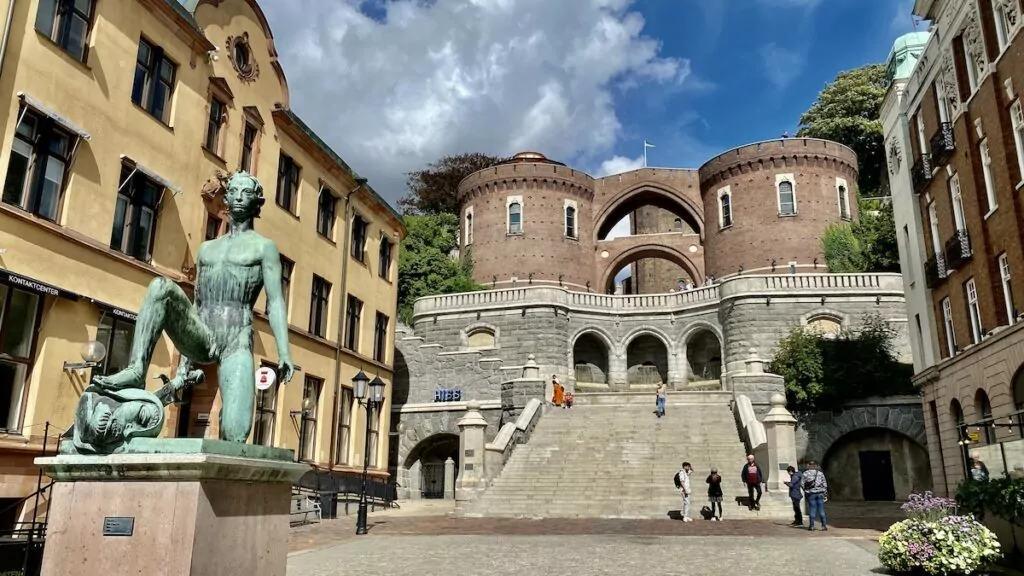
The tower of Kärnan borg was to be the highest point facing Öresund and a large Swedish flag was to fly here to show that Skåne now belonged to Sweden. All boats passing through Öresund had to fire a salute in favour of Helsingborg and Sweden.
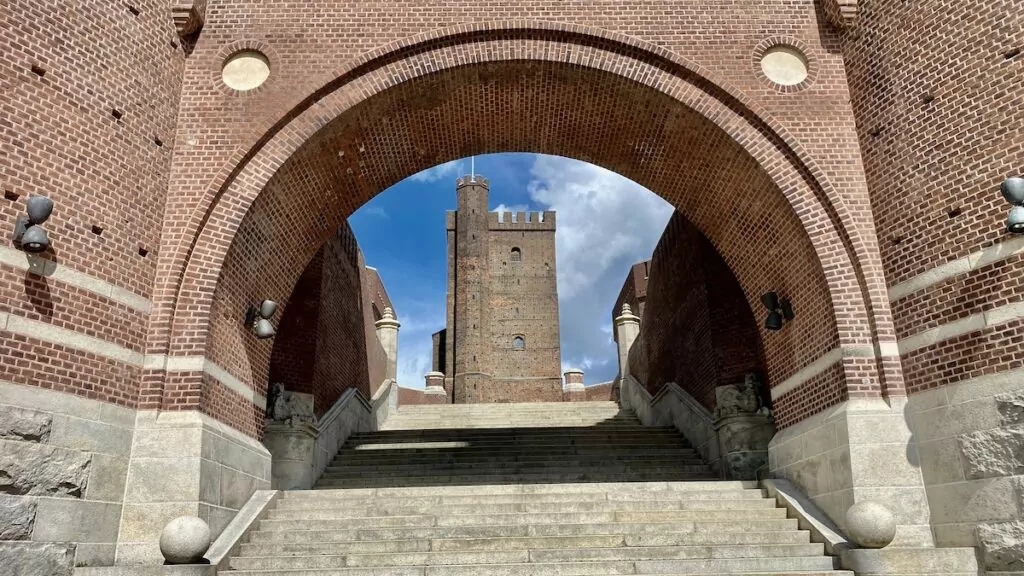
Find here: Kärnan borg is located in Slottshagen high up in the centre of Helsingborg, close to the harbour.
8. Borgeby Castle in Skåne
Borgeby Castle is located in the municipality of Lomma, in Skåne. A fortress probably existed on the site as early as the 11th century and a stone house was built on the site in the 12th century. Since at least 1410, the castle belonged to the Archbishop of Lomma. Lund.
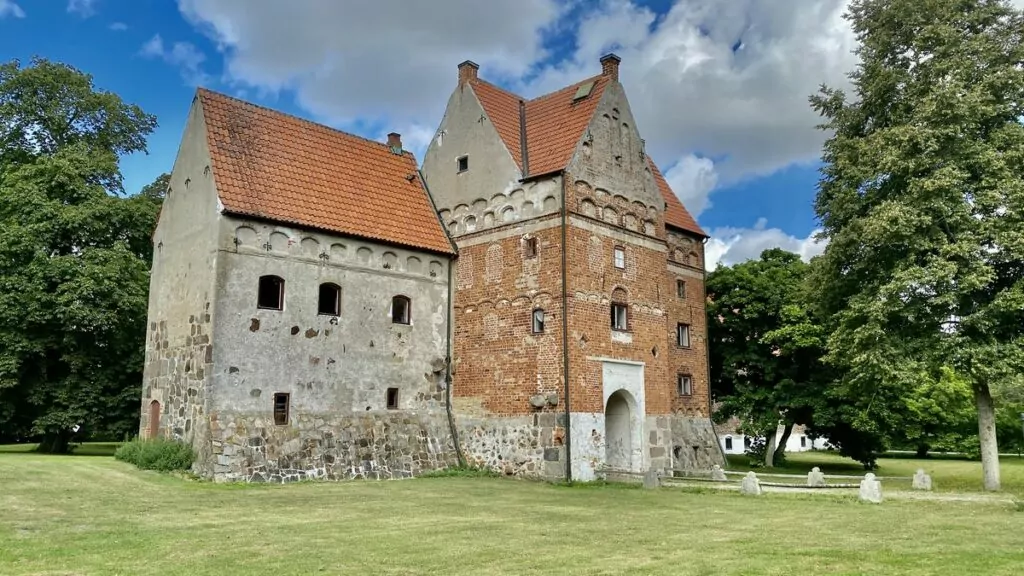
The castle was burned in both 1452 and 1678, and has been rebuilt and restored several times. Today it is used as a café and conference activities here, and the site has a shop, museum and canoe hire.
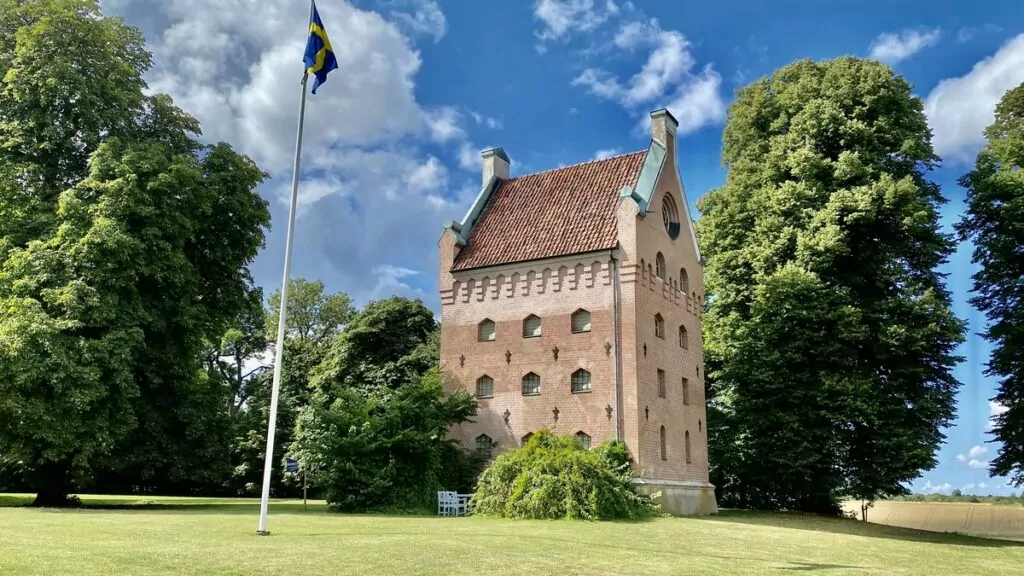
Find here: Borgeby Castle is located at Borgeby Slottsväg 13 in Bjärred, 14 kilometres northwest of Lund.
9. Glimmingehus in Skåne
Glimmingehus in Skåne is the best preserved medieval castle in the Nordic region. It was built at the end of the 15th century by the Danish knight Jens Holgersen Ulfstand, at a time when Scania was part of Denmark. Jens Holgersen was one of the king's closest men and very rich. Together with his second wife, Margareta Arvidsdotter Trolle, he owned a number of castles and mansions.
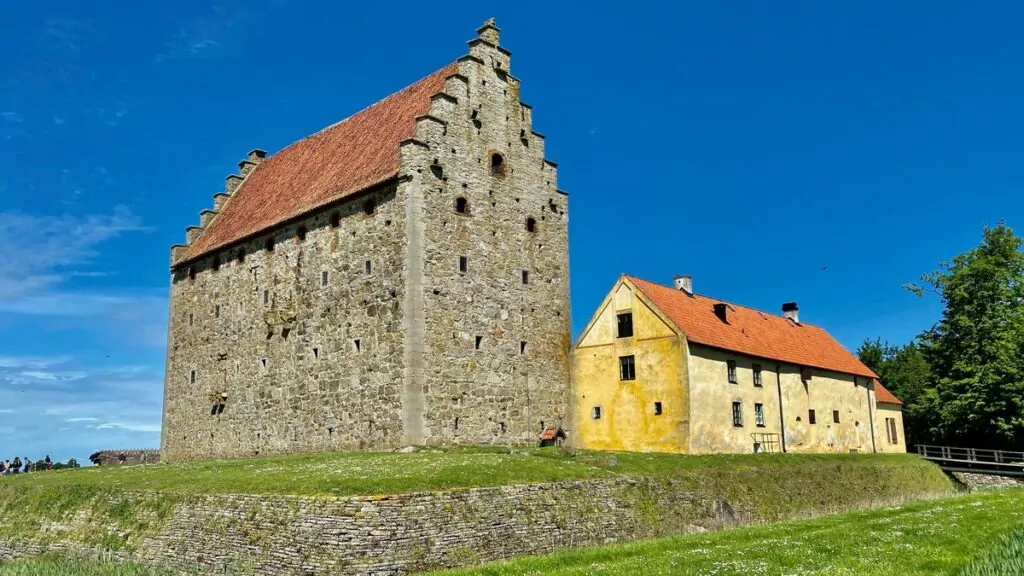
Glimmingehus was a state-of-the-art knight's castle where the couple and their eight children lived a life of luxury and opulence. It featured the latest amenities of the time, such as hot air systems and 'toilets', where you could do your business from the high floors.
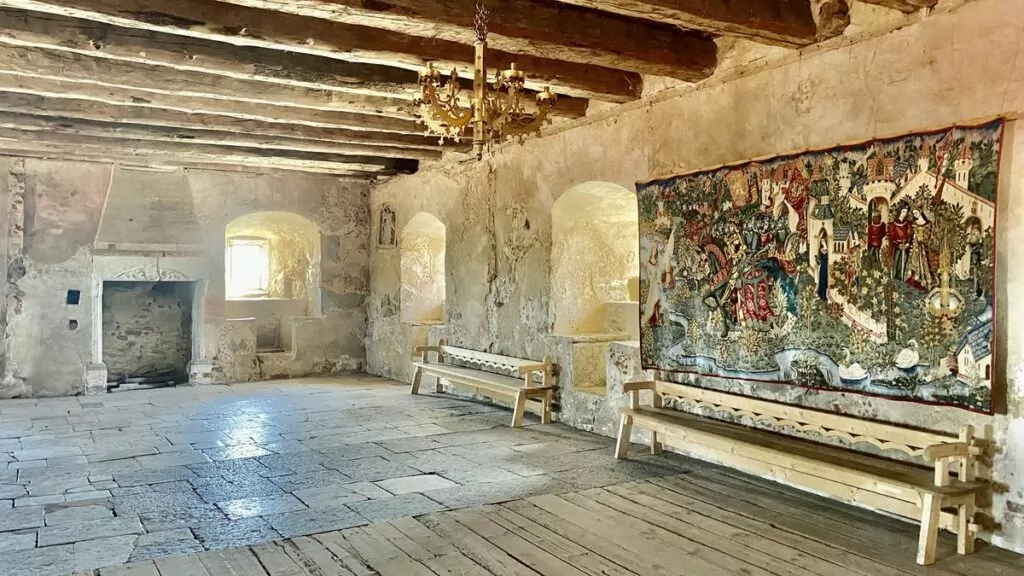
After Jens Holgersson's death, the descendants lived on for a few generations before moving to more modern buildings in the courtyard. In 1676, Charles XI ordered the demolition of the castle to prevent it from falling into the hands of the Danish king. Fortunately, the castle was never demolished, and it still stands today.
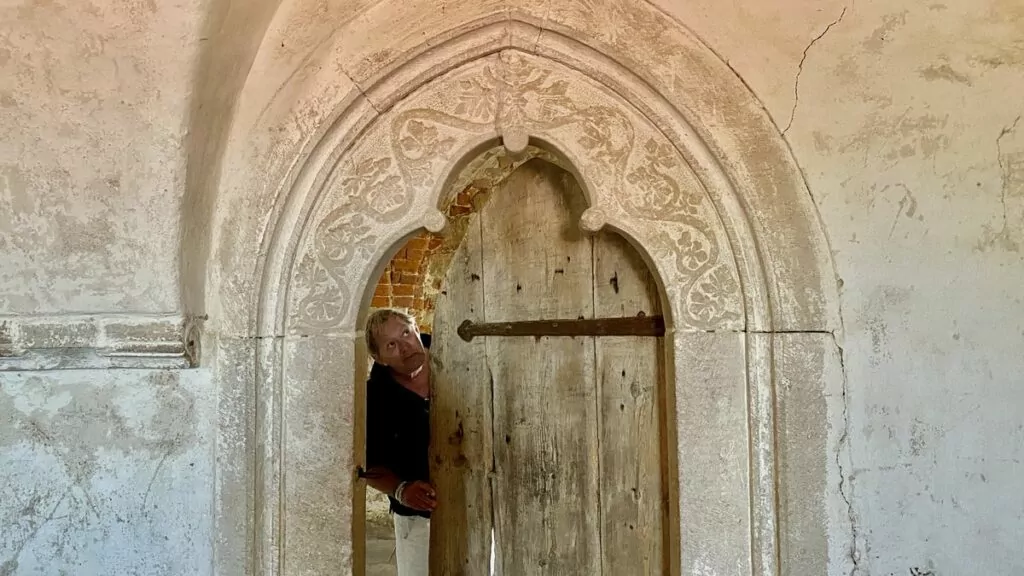
Find here: Glimmingehus is located in Österlen in south-eastern Skåne, about 15 kilometres south-west of Simrishamn.
10. Bollerup Castle in Skåne
Bollerup Castle, located in Tomelilla municipality in Skåne, is, like Glimmingehus, an old medieval castle. Today, the building belongs to an agricultural institute and an agricultural college.
The castle once had four wings, and took on its current appearance in the 1490s. In the 16th century it was left to decay and only in the 20th century has the building been restored. Inside the castle there are decorative lime paintings and on the north side of the castle there is a so-called "pivet", a surface-mounted toilet.
The castle is famous for a grand wedding held here in 1502, when Councillor Oluf Stigsen Kronos married his daughter Magdalene to Tyge Axelsen Brage from Tosterup. The party included 20 000 litres of beer and wine from Germany and France.
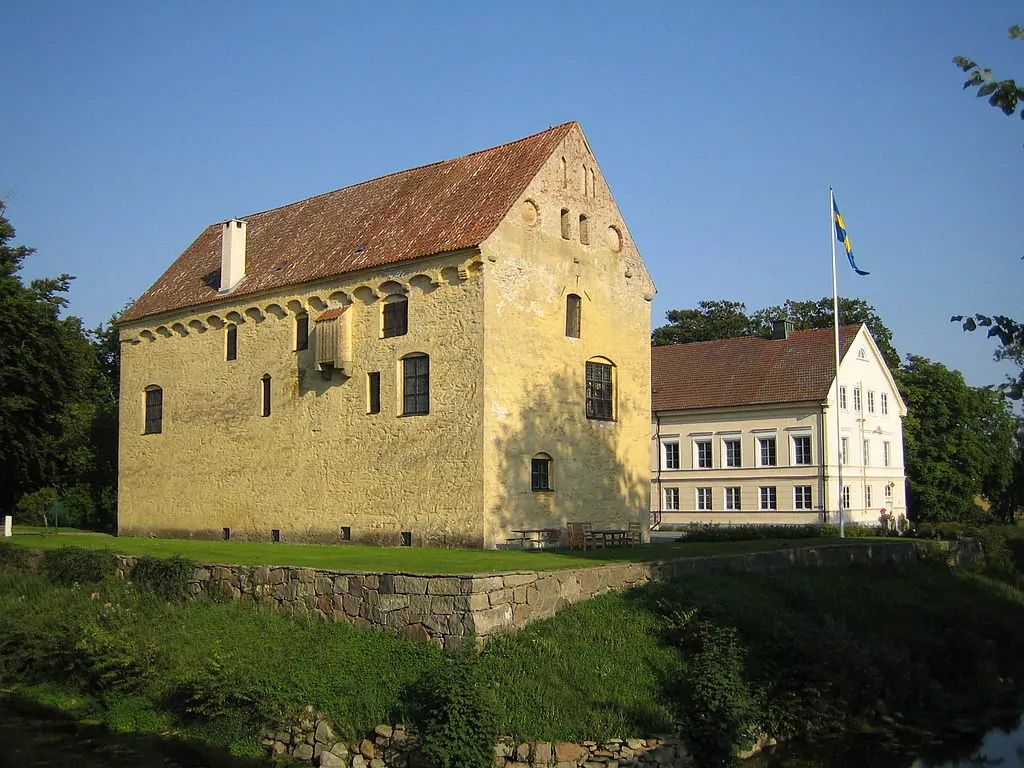
Find here: Bollerup Castle is located in Bollerup, in Tomelilla municipality in Skåne. The castle is located southeast of Tomelilla.
11. Månstorp's gables in Skåne
Månstorp's gables are from the 15th century and was a grain farm. Sophie Krummedige inherited Månstorp from her father and Eske Bille, her husband, had the farm rebuilt into a Renaissance castle between 1540 and 1547.
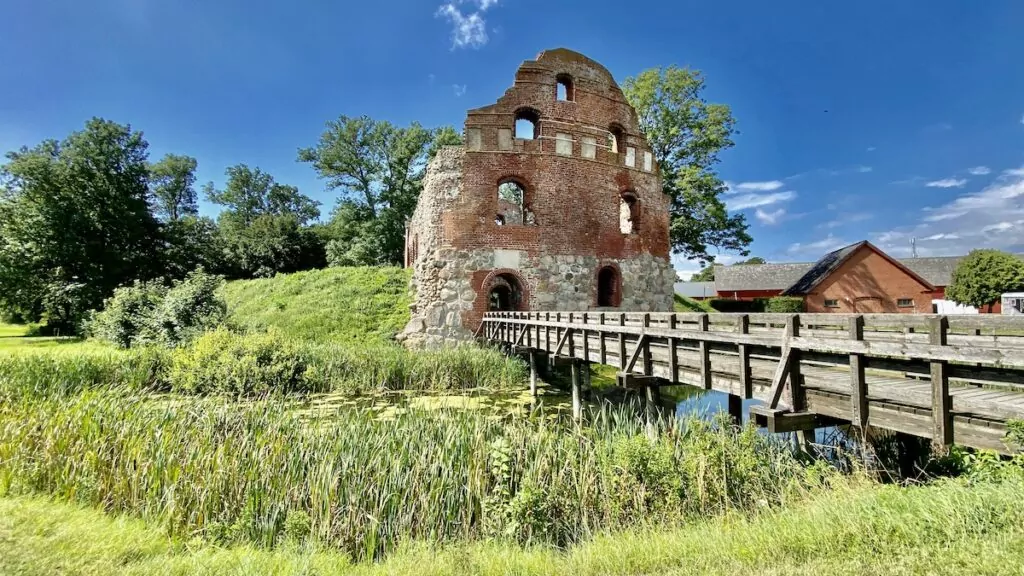
A five-metre high rampart and a water-filled moat were built around the castle. There was a bridge over the moat to access the castle.
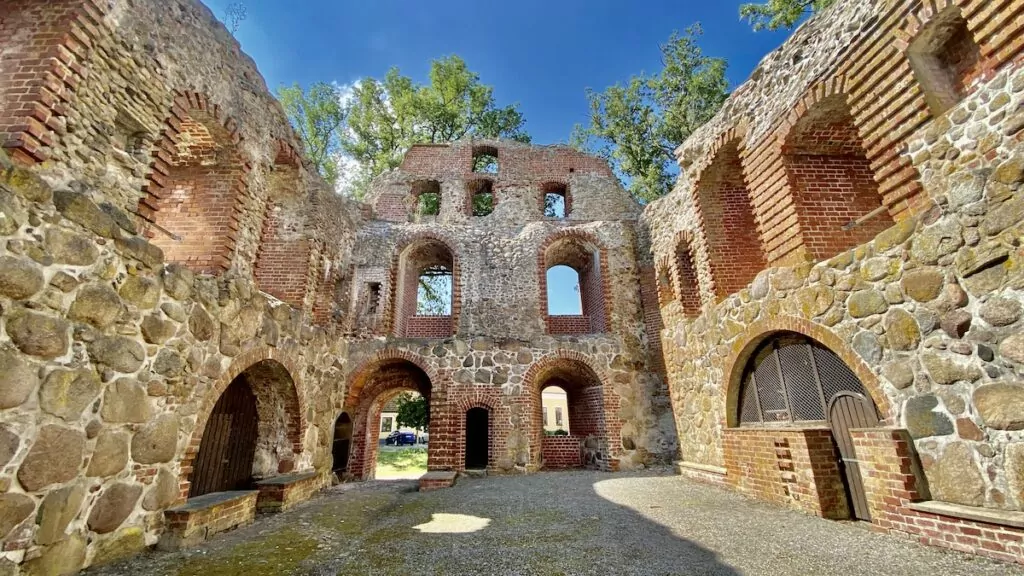
It was a four-storey castle with a knight's hall, living quarters and defences. There were luxuries such as glazed brick floors, painted ceilings, cypress wood coffins and chandeliers made of reindeer and deer horns.
During the Scanian War, Månstorp became Swedish between 1675-1679, but during a Danish attack in 1678, Månstorp was destroyed and eventually became a knight's residence.
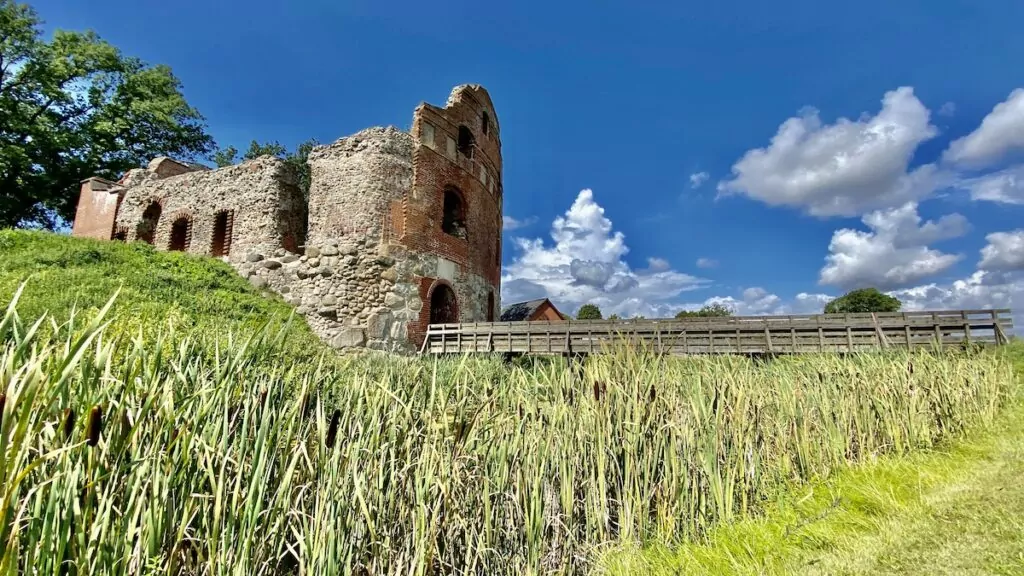
Find here: Månstorp's gables are located east of County Road 101 between Västra Ingelstad and Östra Grevie, in Skåne.
12. Torpa stone house in Västergötland.
Torpa stone house is, together with Glimmingehus in Skåne, one of Sweden's best preserved medieval castles. Torpa is a so-called single house castle from the 15th century, which was the seat of the Stenbock family.
The first stone house was built around 1470 by Councillor Arvid Knutsson as a defence castle against the Danes. In the 16th and 17th centuries, several alterations and additions were made. Inside the castle there is the Knight's Hall with a well-preserved Renaissance interior and the castle chapel, which is decorated in the Baroque style. During the summer, guided tours of the castle are organised.
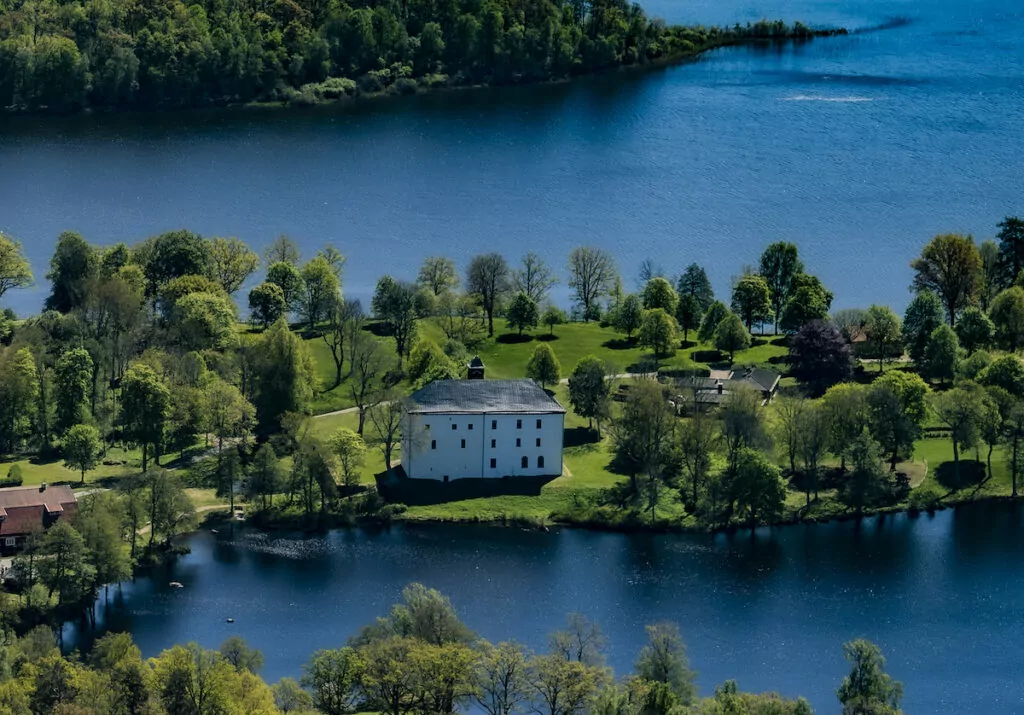
Find here: Torpa stenhus has the address Torpa gård, Länghem, and is located in Tranemo municipality in Västergötland.
13. Tureborgen in Uddevalla
Tureborgen is today a ruin on a hillside in the Uddevalla. The castle, which is similar to a knight's castle, was built in the National Romantic style in the late 19th and early 20th centuries.
It was local politician Ture Malmgren who was responsible for its construction, probably inspired by medieval castles he had seen in Germany. The building contained around 40 rooms and a large knight's hall, as well as several towers, balconies and high stone walls.
After Malmgren's death, the castle fell into disrepair and was completely destroyed by fire in the 1950s. Even after the destruction, the ruin is a popular place to visit.
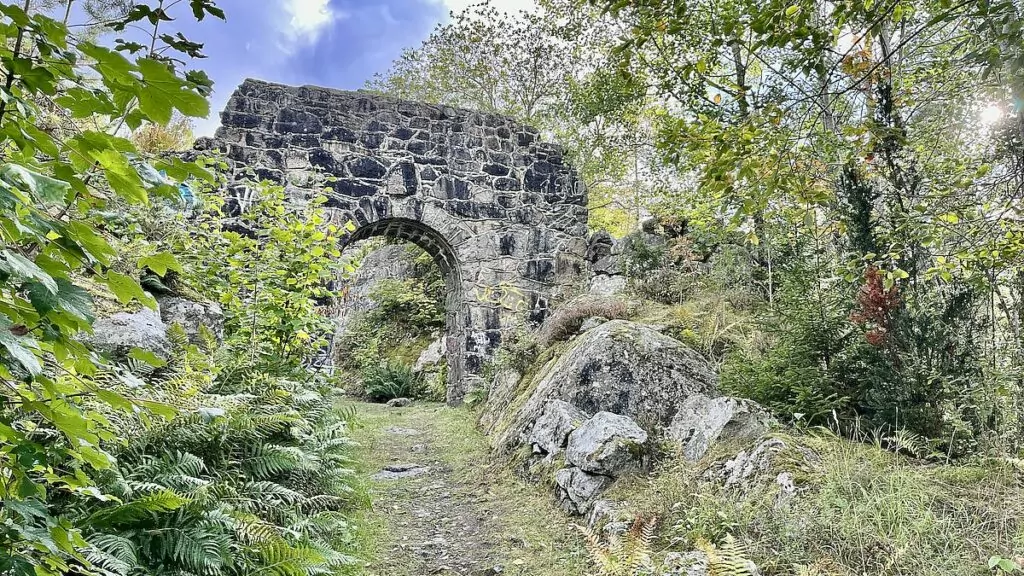
Find here: Tureborgen is located on a hill in south-eastern Uddevalla.
14. Ragnhildsholmen in Kungälv
Ragnhildsholmen is a rocky outcrop on the southern bank of the Nordre älv river on Hisingen in Gothenburg. It contains the ruins of a 13th century castle, which was located near the medieval town of Kungahälla.
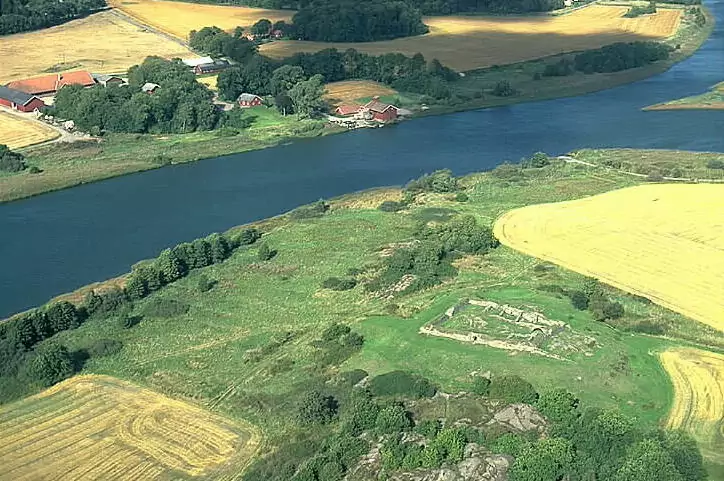
The castle consisted of a wall, a tower, a square courtyard with houses and buildings and a moat. Probably built in the 13th century, in 1304 the Norwegian King Haakon gave the castle to Magnus Ladulås' son Duke Erik. However, the friendly relationship was broken and Haakon tried to take back the castle by force, when he failed, he constructed Bohus Fortress, to reduce the importance of the guarantee.
A few years after the Peace of Oslo in 1310, the castle was returned to Norway, and was probably eventually destroyed by fire.
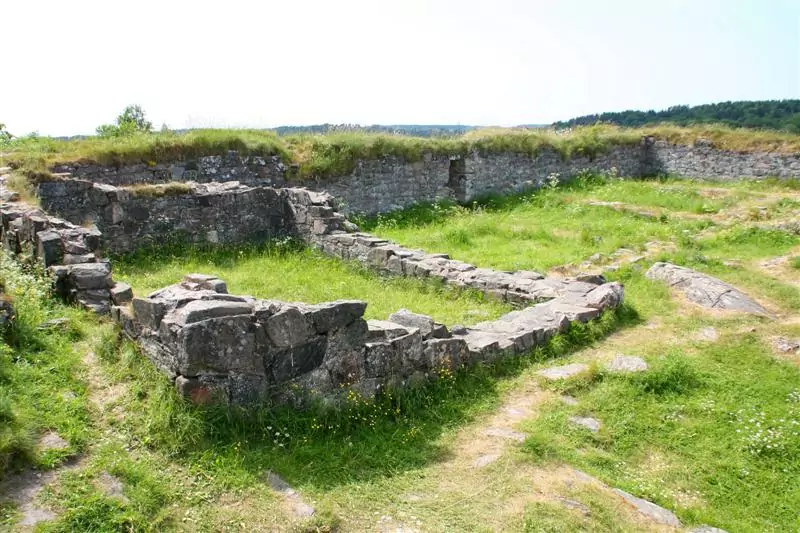
Find here: Ragnhildsholmen is located on the southern bank of the Nordre älv on Hisingen in the municipality of Gothenburg, just next to the municipality of Kungälv in Bohuslän.
15. Örup Castle in Skåne
Örup Castle is a castle in Tomelilla municipality in Skåne. Along with Glimmingehus, Bollerup Castle and Tosterup, it is the single-house castle built here in the late Middle Ages.
The old castle is built in stone, on an estate that has been mentioned since the early 15th century. In 1493 the estate went to Oluf Holgerson Ulfstand, brother of the more famous Jens Holgerson. It was probably Oluf who built the castle in the early 1490s.
Once upon a time, it was possible to defend oneself from here, and even today you can still see bullet holes in the basement. Today the castle is privately owned.
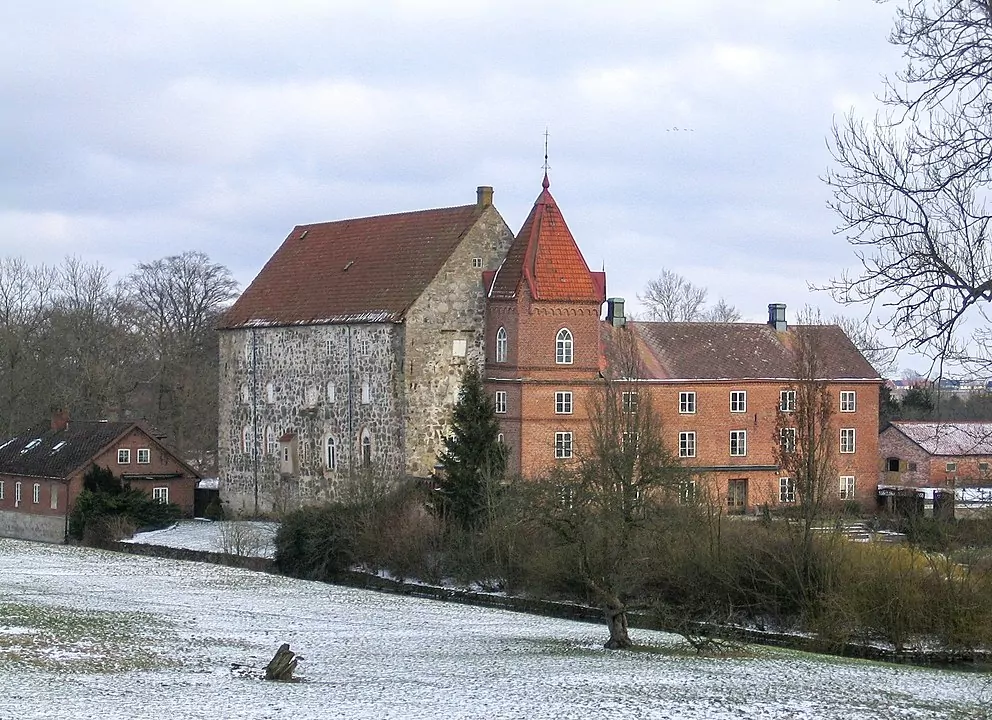
Find here: Örup Castle is located in Tomelilla municipality, just south of Tomelilla, in Skåne, Sweden.
16. Tosterup Castle in Skåne
Tosterup Castle is located in Tomelilla municipality in Skåne. The main building of the castle was built by Thyge Axelsson Brahe and was completed around 1500, while the tower is older. During the mid-18th century, the tower and the other buildings were combined.
Despite several alterations and extensions, the building has retained its old-fashioned appearance. The current castle is three-tiered, has a five-storey defence tower and is surrounded by moats. The farm is now privately owned and its activities include apple growing.
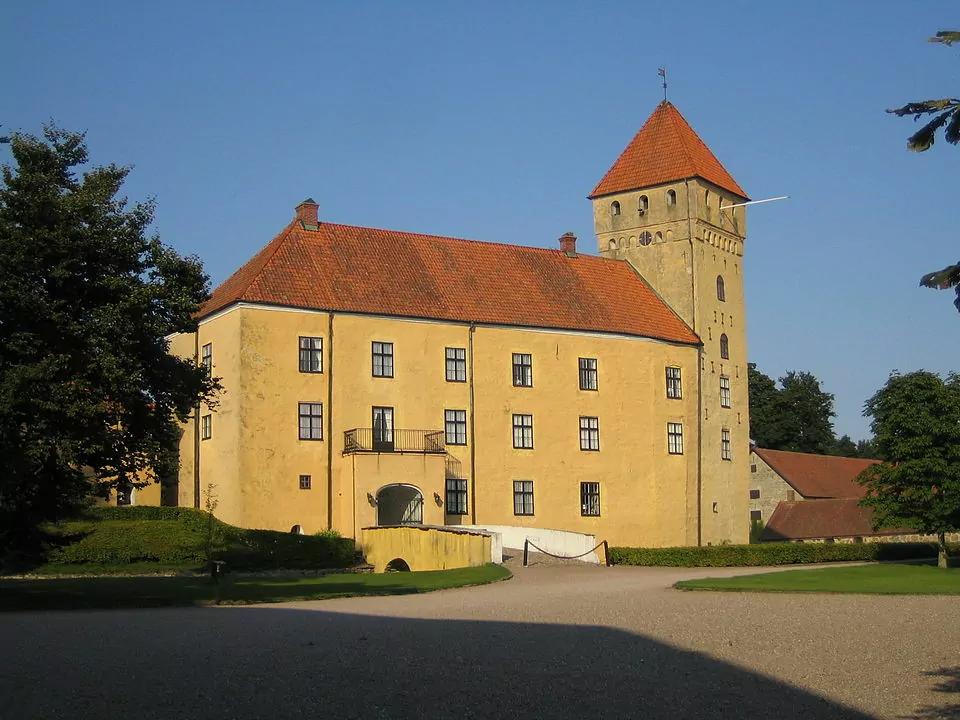
Find here: Tosterup Castle is located in Tomelilla municipality, just south of Tomelilla, in Skåne.
Castles in Sweden - which later became palaces
There are many castles in Sweden that have been converted into stately palaces over time. Instead, we have collected these under the headings "Castles in Sweden" and "Castle ruins in Sweden". Here are some examples:
- Borgholm Castle on Öland
- Gripsholm Castle at Lake Mälaren
- Nyköpingshus in Nyköping
- Stegeborg castle ruins outside Söderköping
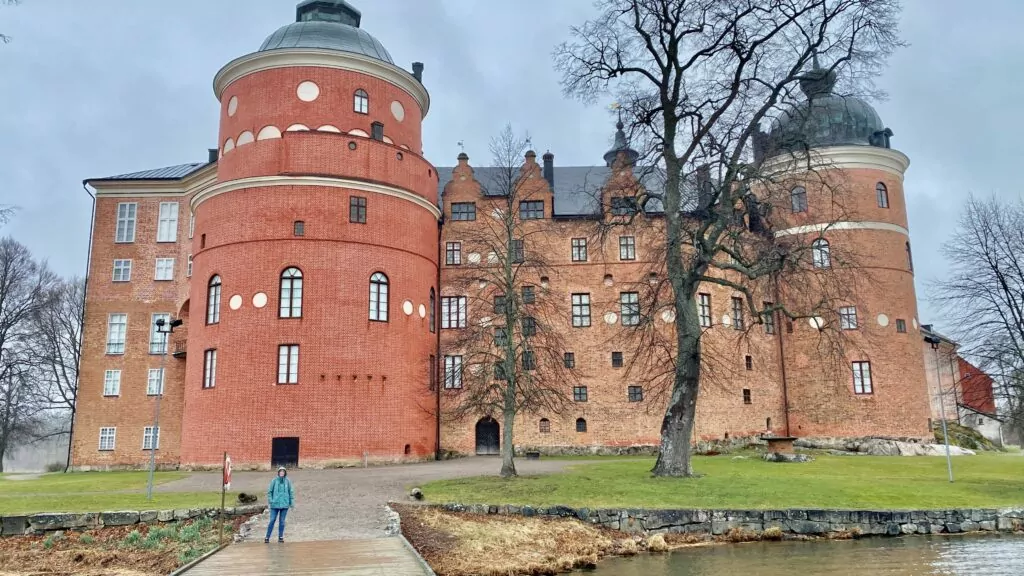
Even more castles in Sweden?
Do you have tips on other Swedish castles worth visiting? Please write in the comment field!

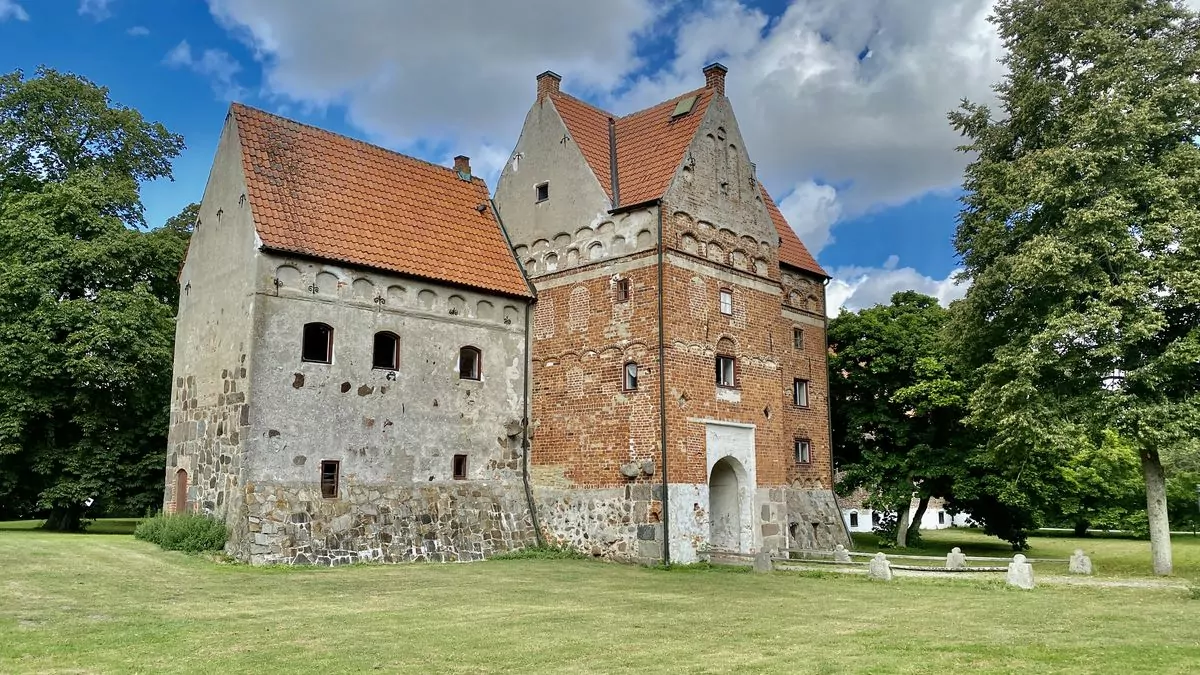










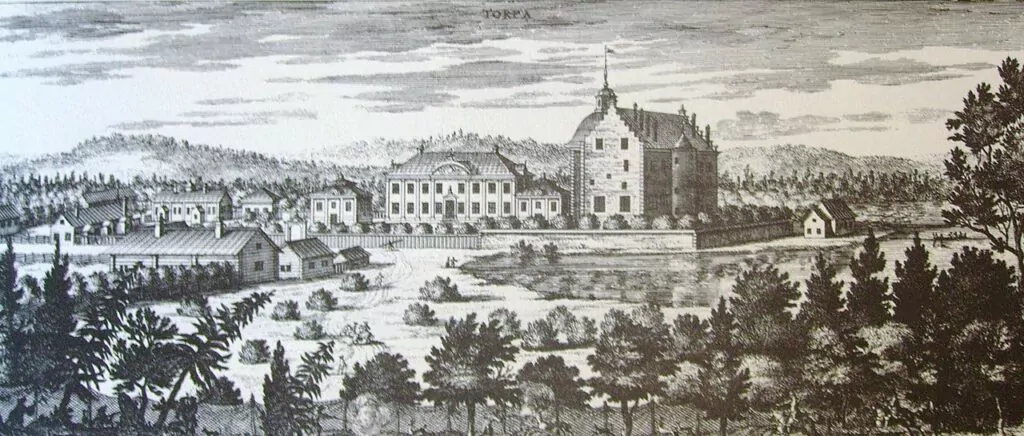
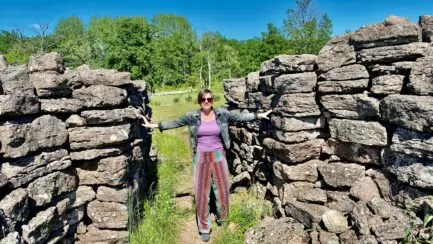
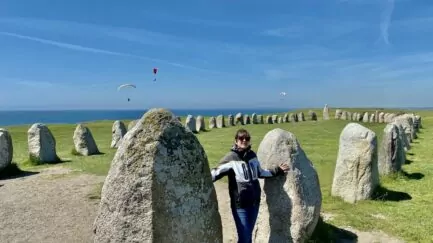
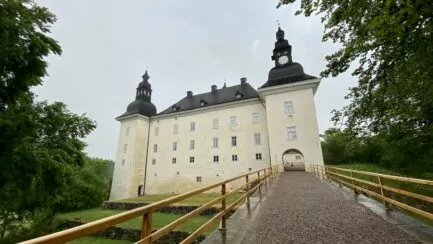
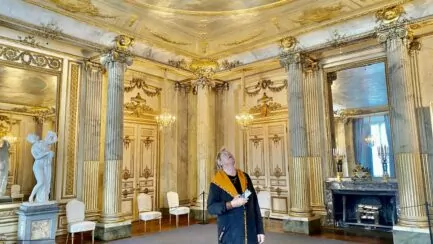
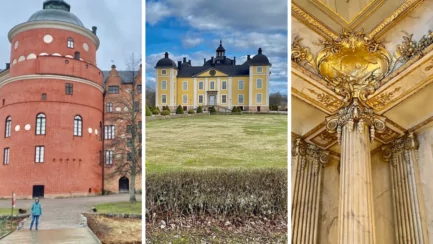



Lena+i+Wales+och+Spanien says:
Interestingly, the borgs.
Some are geographically far from me and some are close.
Some I have visited, others not.
Varberg Fortress is familiar, although it's been a while since I've been inside.
I have never heard of Hunehals borg in Kungsbacka, even though it is in my neighbourhood.
I am familiar with Torpa Stenhus and have visited it several times. I have a friend who is a guide there, so I have also been on a private tour. Historically interesting through marriage to Gustav Vasa.
I have vague memories of Tureborgen in Uddevalla.
Ragnhildsholmen near Kungälv is on my to go list. Have been there before, but would like to visit it again.
Have a nice weekend!
02 April 2022 - 8:35
Helena says:
Nice to hear about your experiences with the different castles! We have been on our way to Torpa Stenhus, we have not visited it yet, but it will probably happen!
03 April 2022 - 17:10
BP says:
Castles like castles I usually say. Well, not really when I look at your beautiful pictures. Have always had difficulty keeping the "concepts" castle, castle and fortress apart. As I said castle as a castle; -) Many thanks for writing about the differences.
02 April 2022 - 18:03
Helena says:
I totally agree that it's hard to separate the concepts. That's why I had to write a little list, to help myself 😉 (Then again, it's not always obvious anyway).
03 April 2022 - 17:10
Maria / emjis says:
There were almost all checks! Or at least been outside... There are some left to tick off😉.
03 April 2022 - 10:44
Helena says:
Oh that was good work!!! 🙂
03 April 2022 - 17:11
christina berggren says:
Utö house in Enköping (15th century) nice castle!
30 June 2022 - 20:45